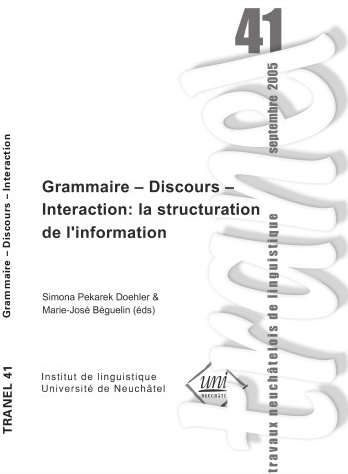Introduction de référents topiques dans des dialogues d’adolescents dysphasiques: le cas de la construction présentative clivée
DOI :
https://doi.org/10.26034/tranel.2005.2704Résumé
This paper is concerned with some aspects of cohesion in dialogic discourse involving four 13 years-old teenagers affected by specific language impairment (S.L.I.). We describe here how a referent is introduced in their discourse and the means by which something is predicated about it afterwards. That is to say, we are exploring how a referent becomes topic, understanding the notion of topic in terms of «aboutness» (Reinhart, 1981; Lambrecht, 1994). Thereby, we pay special attention to a specific syntactic construction, the French presentative cleft construction il y a...qui.
Most researches on specific language impairment share a structural approach (Leonard, 1998; Jakubowicz, 1999). Studies on language impairment emanating from a discourse perspective are predominantly concerned with narrative productions (de Weck, 1996, 2003; Liles, 1996). Very few studies deal with dialogic productions. This kind of data, however, provides new insights into language pathology.
This study shows that S.L.I. productions reveal a general mastery of pragmatic, informational constraints while still showing a certain number of pragmatic particularities: at moments, the S.L.I. teenagers omit re ferential expressions, they produce non- canonical forms of the presentative cleft construction investigated here and they sometimes seem to use this construction in particular ways.


